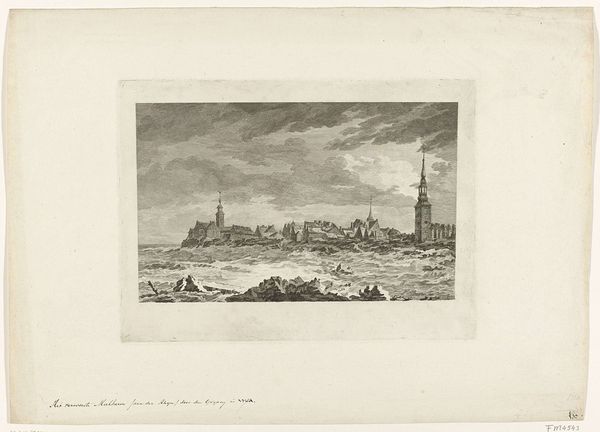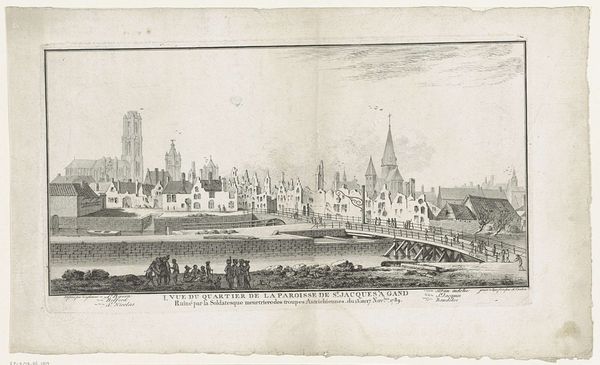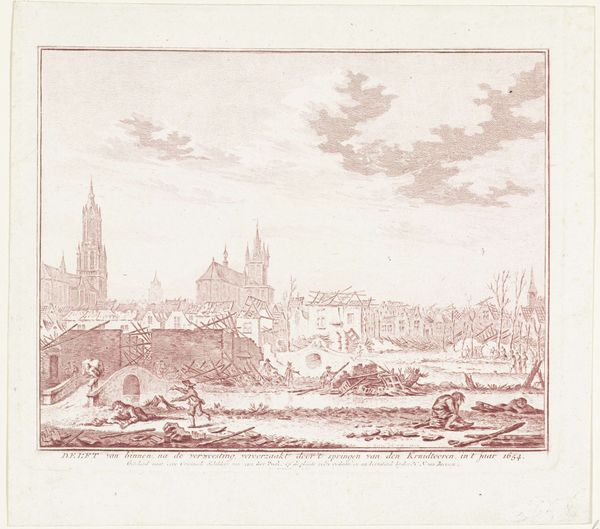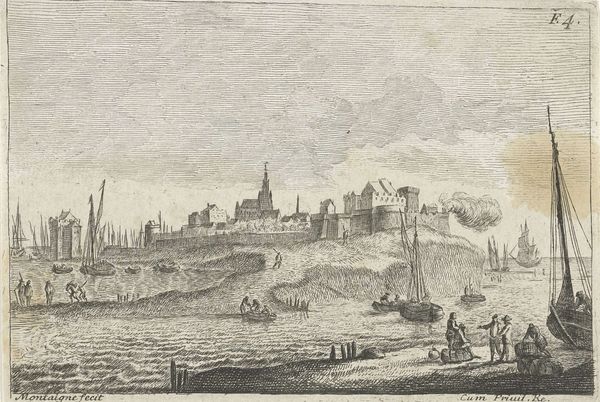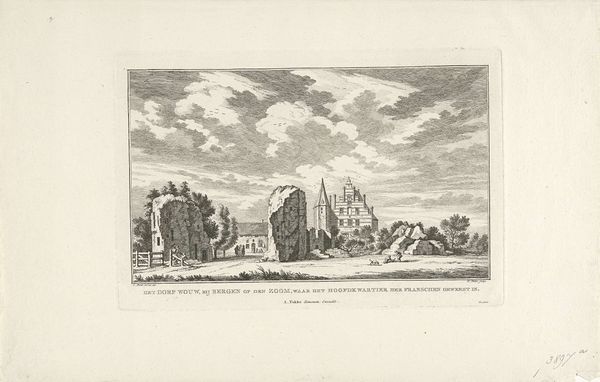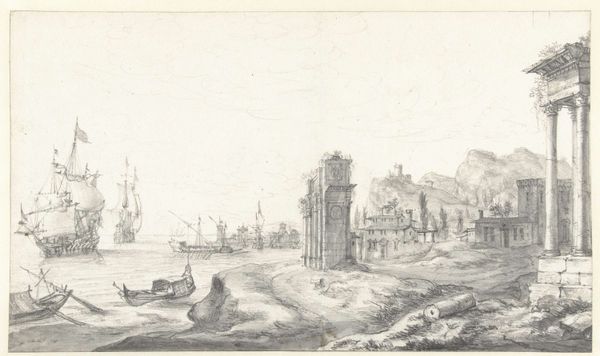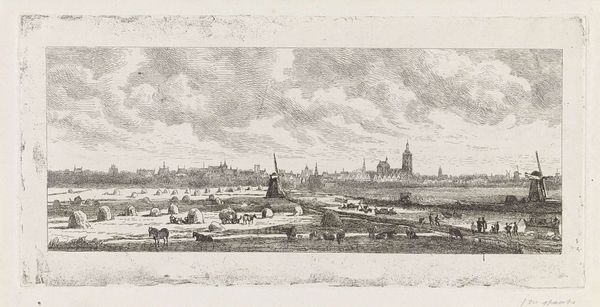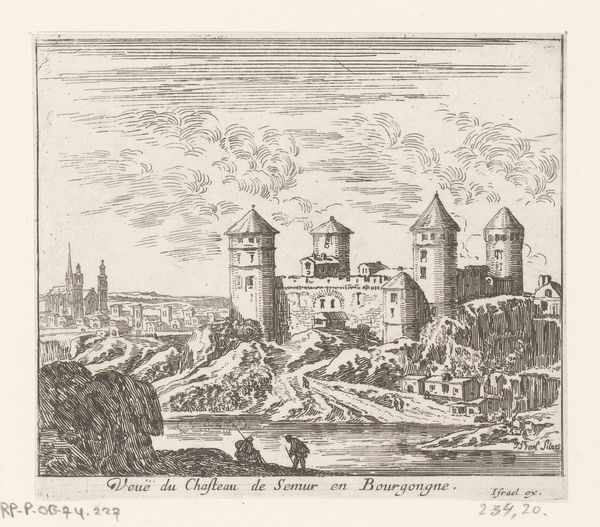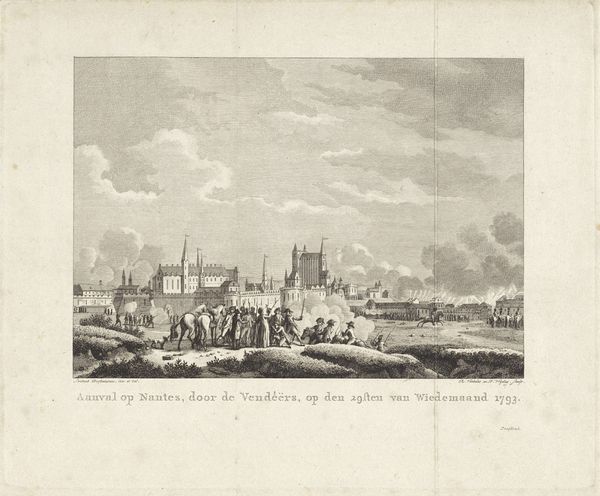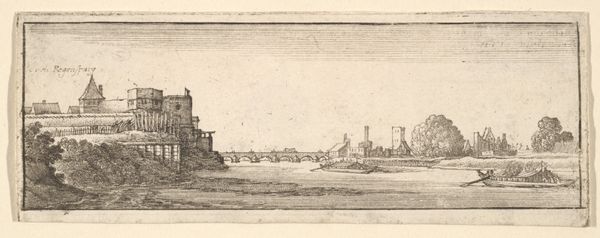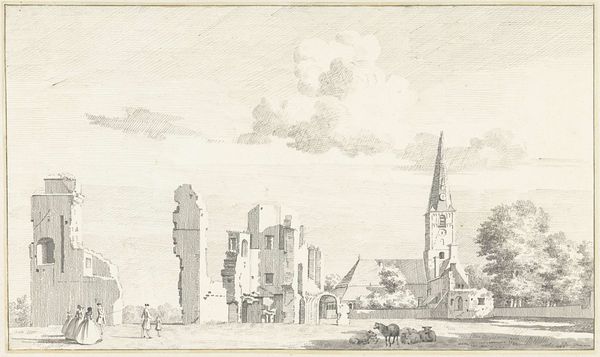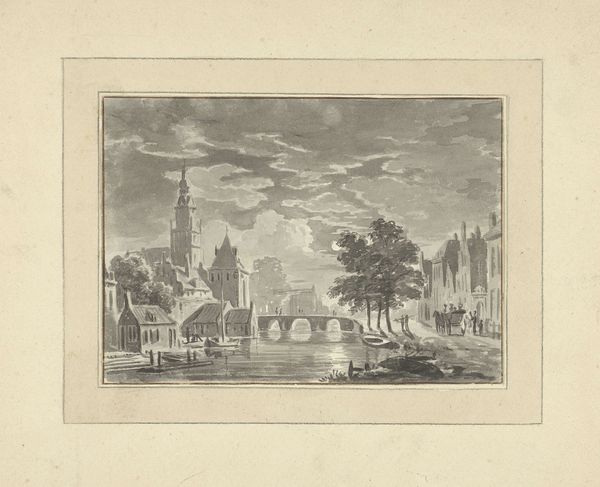
#
aged paper
#
light pencil work
#
old engraving style
#
sketch book
#
personal sketchbook
#
sketchwork
#
pen-ink sketch
#
sketchbook drawing
#
pencil work
#
sketchbook art
Dimensions: height 180 mm, width 270 mm
Copyright: Rijks Museum: Open Domain
Editor: This is "Ruïnes in de Hoogstraat en Grote Markt," a pen and ink sketch from around 1772-1780 by Simon Fokke. The stark depiction of ruins against the skyline is striking; it feels almost apocalyptic. What historical context informs our understanding of this devastation? Curator: It's important to consider what Fokke is presenting here. This wasn't simply a picturesque ruin. The Hoogstraat and Grote Markt were in the heart of a community, a commercial hub. These are not ancient ruins from bygone eras; they depict the aftermath of recent destruction, of very real impact to civic and personal lives. What statements do you think the artist is trying to make? Editor: Perhaps a commentary on the fragility of urban life, or even a political statement about war and its consequences? Curator: Precisely. Fokke worked during a period of significant political upheaval in the Netherlands. There were tensions building up to the Fourth Anglo-Dutch War. An image of destruction, particularly in such a recognizable and vital urban area, served as a stark reminder of vulnerability and conflict, influencing the public’s perception of stability and security. This resonates far more deeply than a simple landscape study, doesn’t it? Editor: Absolutely. The social commentary embedded in this work completely changes how I view it. It’s no longer just a scene, but a reflection on the events and the fears of the time. Curator: Exactly. Artists often react and respond to the environment of their creation. Visual imagery frequently transcends beyond mere aesthetic or technique, permeating and engaging sociopolitical norms that sculpt and reshape their artistic output. Editor: It is a poignant message for its time, and it carries echoes of warning that extend into the present day. Thank you. Curator: You’re welcome. It has been rewarding discussing art as a reflection of socio-political circumstances.
Comments
No comments
Be the first to comment and join the conversation on the ultimate creative platform.
